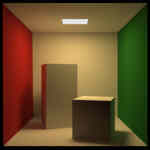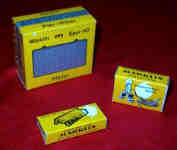Cuboids, Rectangular Prisms and Cubes
Go to Surface Area or Volume.
A cuboid is a box-shaped object.
It has six flat faces and all angles are right angles.
And all of its faces are rectangles.
It is also a prism because it has the same cross-section along a length. In fact it is a rectangular prism.
Examples of Cuboids
Cuboids are very common in our world, from boxes to buildings we see them everywhere. We can even fit them inside other cuboids!

A building

A box with a
slot as a handle

Cuboids in a
cuboid room

Boxes for model trains
Now that's just silly!
Square Prism
When at least two of the lengths are equal it can also be called a square prism.
(Note: we can still call it a rectangular prism if we want!)
Cube
When all three lengths are equal it is called a cube (or hexahedron)
and each face is a square.
A cube is still a prism.
And a cube is one of the Platonic Solids.
So:
- A cube is just a special case of a square prism, and
- A square prism is just a special case of a rectangular prism, and
- They are all cuboids!
Note: The name "cuboid" comes from "cube" and -oid (which means "similar to, or resembling") and so says "it is like a cube".
Another use of -oid is when we talk about the Earth being a spheroid (not exactly a sphere, but close).
Surface Area
The surface area is found using the formula:
Area = 2 × Width × Length + 2 × Length × Height + 2 × Width × Height
Which can be shortened to:
A = 2wl + 2lh + 2hw
Example: Find the surface area of this cuboid
| A | = | 2wl + 2lh + 2hw |
| = | 2×4×10 + 2×10×5 + 2×5×4 | |
| = | 80 + 100 + 40 | |
| = | 220 |
Volume
The volume of a cuboid is found using the formula:
Volume = Length × Width × Height
Which can be shortened to:
V = l × w × h
Or more simply:
V = lwh
Example: Find the volume of this cuboid
V = lwh = 10×4×5 = 200 |